
Aerospace and defense company Raytheon (NYSE:RTX) reported Q3 CY2025 results topping the market’s revenue expectations, with sales up 11.9% year on year to $22.48 billion. The company’s full-year revenue guidance of $86.75 billion at the midpoint came in 1.2% above analysts’ estimates. Its non-GAAP profit of $1.70 per share was 20.6% above analysts’ consensus estimates.
Is now the time to buy RTX? Find out by accessing our full research report, it’s free for active Edge members.
RTX (RTX) Q3 CY2025 Highlights:
- Revenue: $22.48 billion vs analyst estimates of $21.32 billion (11.9% year-on-year growth, 5.4% beat)
- Adjusted EPS: $1.70 vs analyst estimates of $1.41 (20.6% beat)
- Adjusted EBITDA: $3.73 billion vs analyst estimates of $3.27 billion (16.6% margin, 14.1% beat)
- The company lifted its revenue guidance for the full year to $86.75 billion at the midpoint from $85.13 billion, a 1.9% increase
- Management raised its full-year Adjusted EPS guidance to $6.15 at the midpoint, a 4.7% increase
- Operating Margin: 11.2%, up from 10.1% in the same quarter last year
- Free Cash Flow Margin: 17.9%, up from 9.8% in the same quarter last year
- Organic Revenue rose 13% year on year vs analyst estimates of 7.5% growth (545.8 basis point beat)
- Market Capitalization: $215.1 billion
"Strong execution in the third quarter enabled us to deliver double-digit organic sales growth* across all three segments and our sixth consecutive quarter of year-over-year adjusted segment margin expansion*," said RTX Chairman and CEO Chris Calio.
Company Overview
Originally focused on refrigeration technology, Raytheon (NSYE:RTX) provides a a variety of products and services to the aerospace and defense industries.
Revenue Growth
A company’s long-term performance is an indicator of its overall quality. Even a bad business can shine for one or two quarters, but a top-tier one grows for years. Over the last five years, RTX grew its sales at a solid 10.5% compounded annual growth rate. Its growth beat the average industrials company and shows its offerings resonate with customers.
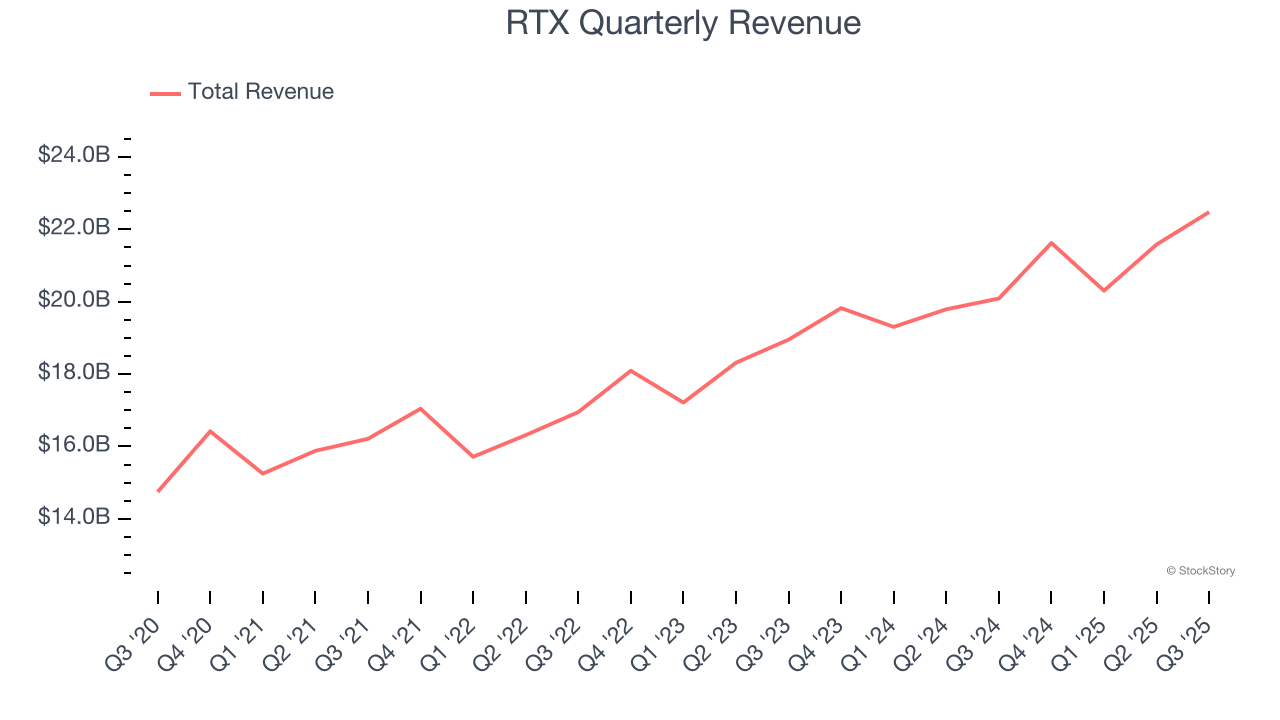
We at StockStory place the most emphasis on long-term growth, but within industrials, a half-decade historical view may miss cycles, industry trends, or a company capitalizing on catalysts such as a new contract win or a successful product line. RTX’s annualized revenue growth of 8.8% over the last two years is below its five-year trend, but we still think the results were respectable. 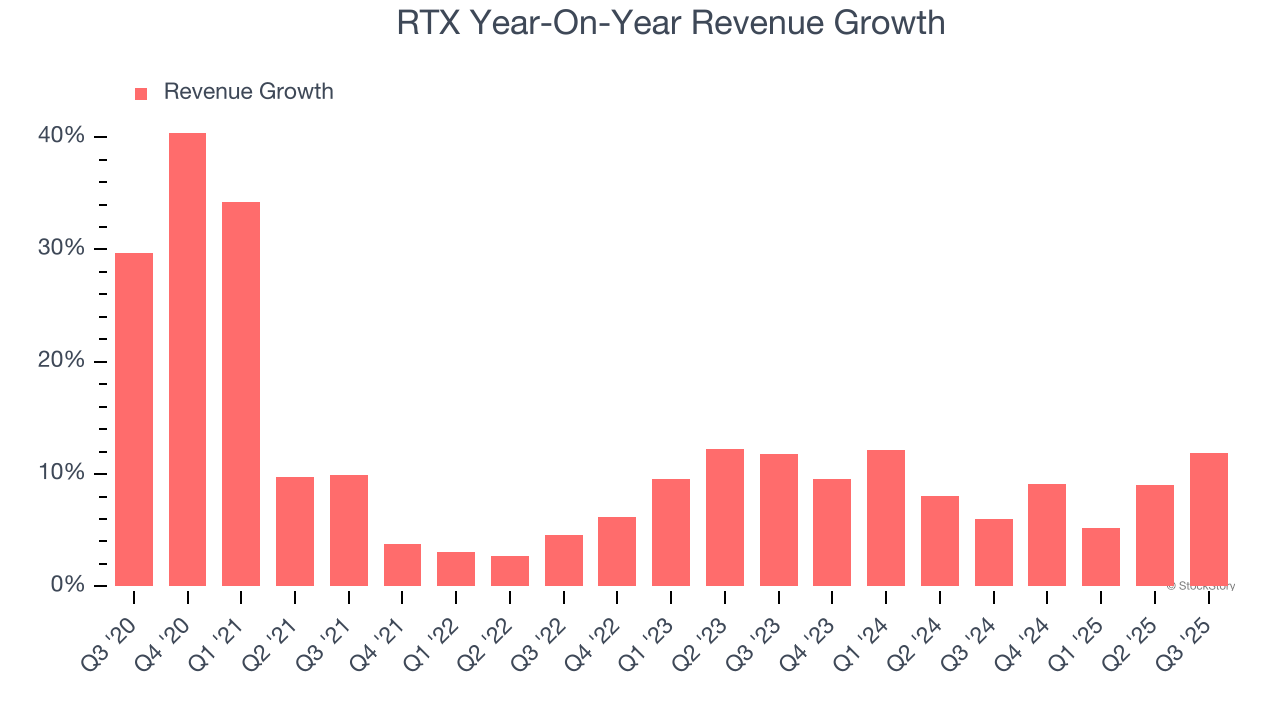
We can dig further into the company’s sales dynamics by analyzing its organic revenue, which strips out one-time events like acquisitions and currency fluctuations that don’t accurately reflect its fundamentals. Over the last two years, RTX’s organic revenue averaged 11.9% year-on-year growth. Because this number is better than its two-year revenue growth, we can see that some mixture of divestitures and foreign exchange rates dampened its headline results. 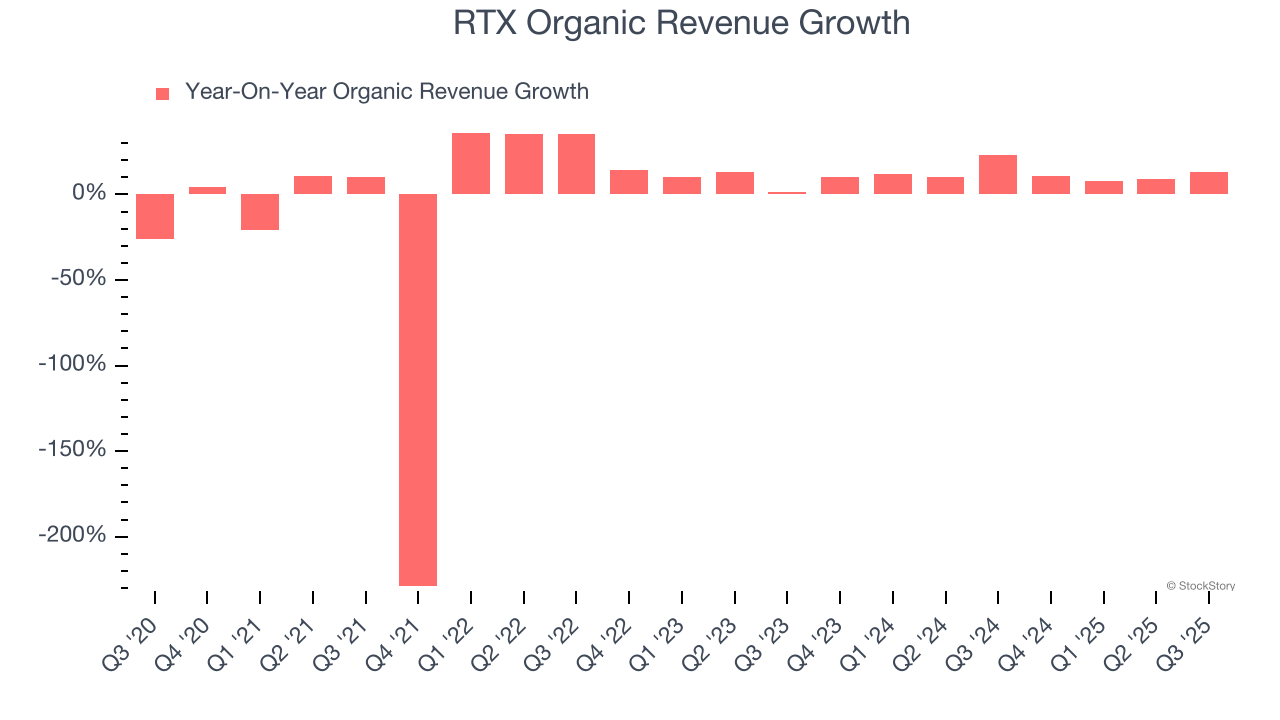
This quarter, RTX reported year-on-year revenue growth of 11.9%, and its $22.48 billion of revenue exceeded Wall Street’s estimates by 5.4%.
Looking ahead, sell-side analysts expect revenue to grow 3.7% over the next 12 months, a deceleration versus the last two years. This projection doesn't excite us and implies its products and services will face some demand challenges.
Unless you’ve been living under a rock, it should be obvious by now that generative AI is going to have a huge impact on how large corporations do business. While Nvidia and AMD are trading close to all-time highs, we prefer a lesser-known (but still profitable) stock benefiting from the rise of AI. Click here to access our free report one of our favorites growth stories.
Operating Margin
Operating margin is a key measure of profitability. Think of it as net income - the bottom line - excluding the impact of taxes and interest on debt, which are less connected to business fundamentals.
RTX was profitable over the last five years but held back by its large cost base. Its average operating margin of 7.5% was weak for an industrials business.
On the plus side, RTX’s operating margin rose by 4.3 percentage points over the last five years, as its sales growth gave it operating leverage.
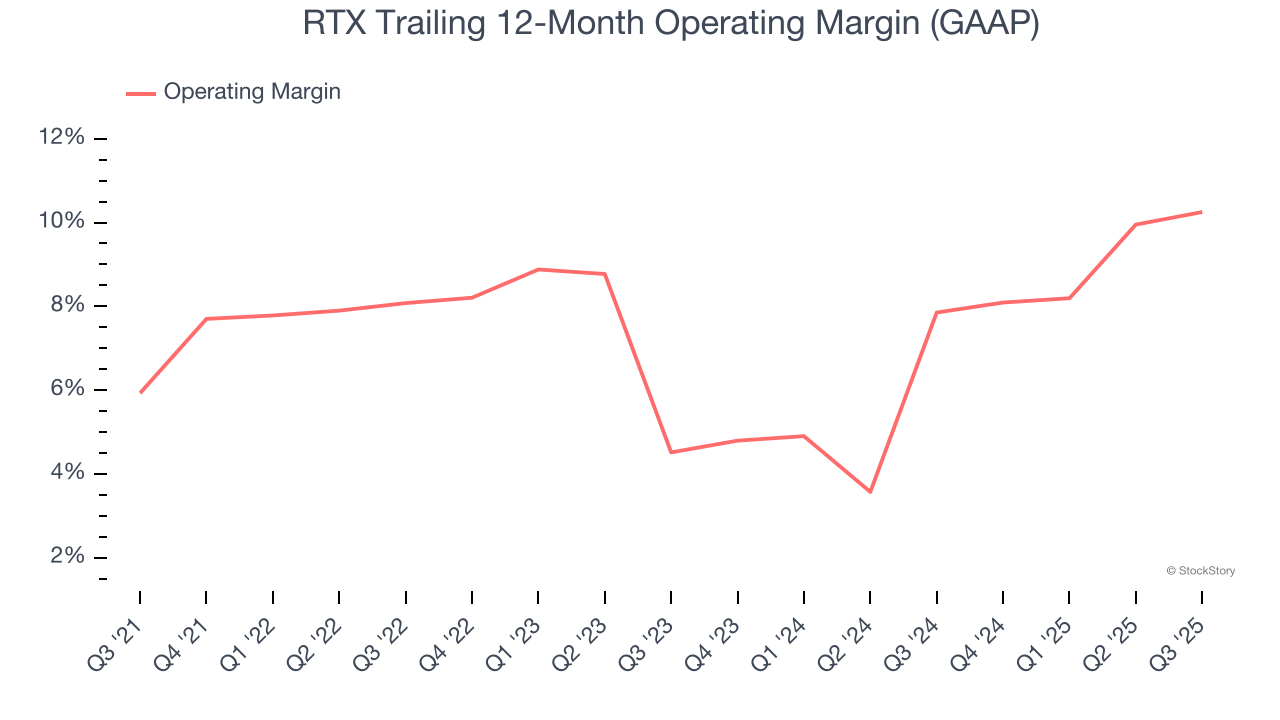
This quarter, RTX generated an operating margin profit margin of 11.2%, up 1.1 percentage points year on year. This increase was a welcome development and shows it was more efficient.
Earnings Per Share
Revenue trends explain a company’s historical growth, but the long-term change in earnings per share (EPS) points to the profitability of that growth – for example, a company could inflate its sales through excessive spending on advertising and promotions.
RTX’s solid 11.4% annual EPS growth over the last five years aligns with its revenue performance. This tells us its incremental sales were profitable.
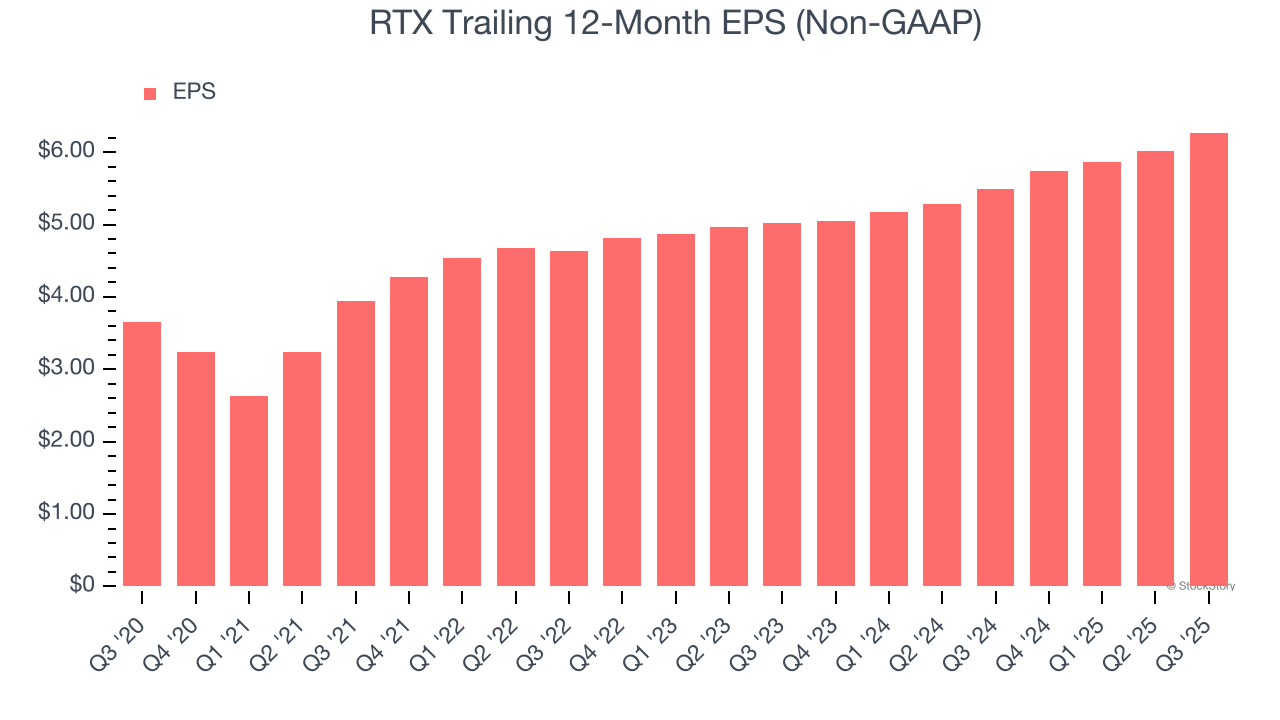
Like with revenue, we analyze EPS over a shorter period to see if we are missing a change in the business.
RTX’s two-year annual EPS growth of 11.8% was great and topped its 8.8% two-year revenue growth.
Diving into RTX’s quality of earnings can give us a better understanding of its performance. RTX’s operating margin has expanded over the last two yearswhile its share count has shrunk 6.2%. Improving profitability and share buybacks are positive signs for shareholders as they juice EPS growth relative to revenue growth. 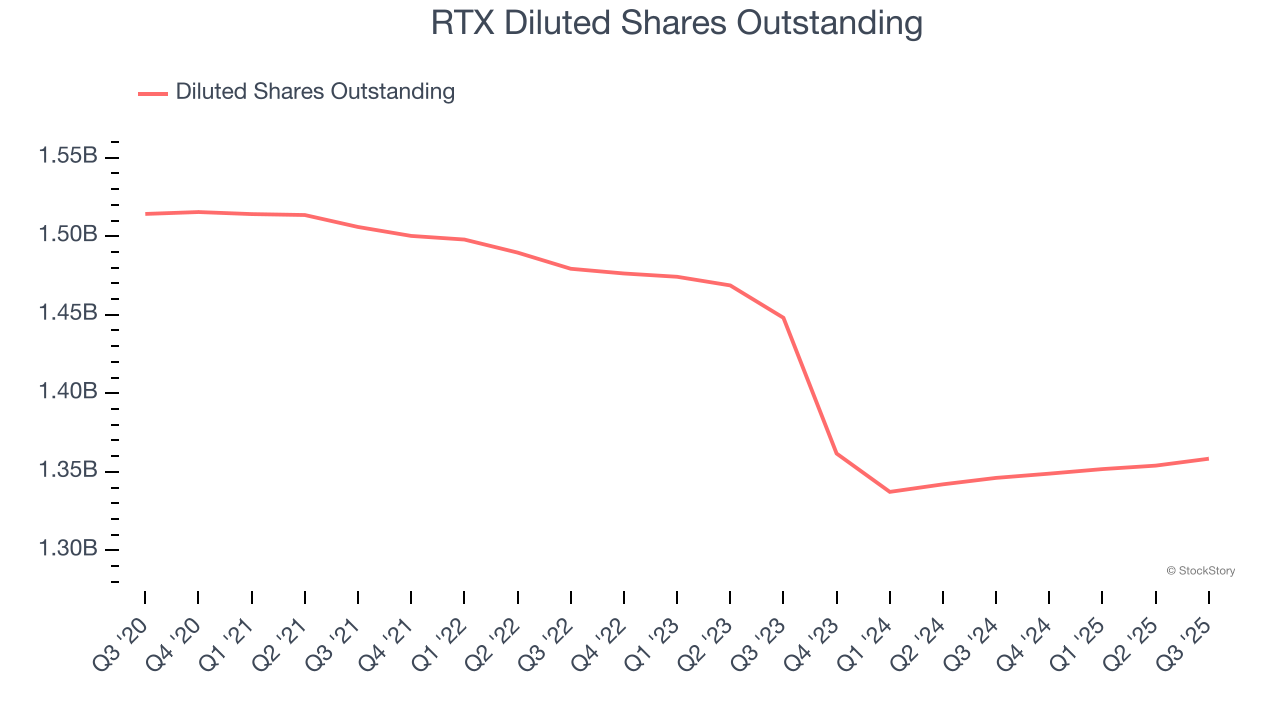
In Q3, RTX reported adjusted EPS of $1.70, up from $1.45 in the same quarter last year. This print easily cleared analysts’ estimates, and shareholders should be content with the results. Over the next 12 months, Wall Street expects RTX’s full-year EPS of $6.27 to grow 1.7%.
Key Takeaways from RTX’s Q3 Results
This was a beat and raise quarter. We were impressed by how significantly RTX blew past analysts’ organic revenue expectations this quarter. We were also excited its EBITDA outperformed Wall Street’s estimates by a wide margin. Looking forward, the company raised its full-year guidance for revenue and EPS. Zooming out, we think this quarter was very good with little to pick on. The stock traded up 5.1% to $168.85 immediately following the results.
RTX had an encouraging quarter, but one earnings result doesn’t necessarily make the stock a buy. Let’s see if this is a good investment. If you’re making that decision, you should consider the bigger picture of valuation, business qualities, as well as the latest earnings. We cover that in our actionable full research report which you can read here, it’s free for active Edge members.
